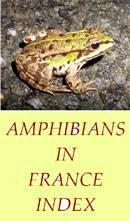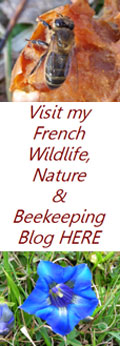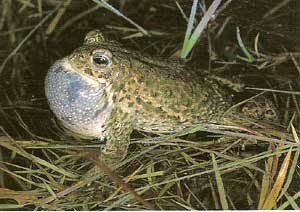
Crapaud des Joncs Bufo calamita Natterjack Toad
(Syn Franaise. Crapaud Calamite)
The Natterjack Toad grows to 10cm and has short rear legs; front and rear feet have little webbing. Its head is narrow in comparison to its body and has eyes with horizontal pupils. The back is greyish green and spotted with darker markings, covered in warts which can often be brightly coloured with red or yellow, yellow band which runs down the centre of its back for the entire length. Light colour underneath with darker speckling. Tends to run rather than walk or hop, hence it is often called the running toad in the UK.

Photo. Natterjack toad, France.
It is to be found in all regions of France but is generally confined to very light or sandy soils with shallow lakes or ponds and an open aspect, typically sand dunes, heathlands, sand and gravel excavation sites, and to some extent vineyards and asparagus fields. Mainly nocturnal it spends the day in holes in the ground which it frequently makes itself. It has a very laud call or croak in short bursts of a second or two which can sometimes be heard during the day as well as during the night. Diet is made up of insects, worms, small slugs and where it is present by the coastline it will search the tide line for marine invertebrates. When threatened it can emit a foul smell and inflate its body. Hibernation takes place from October until the end of February in underground holes and cavities.
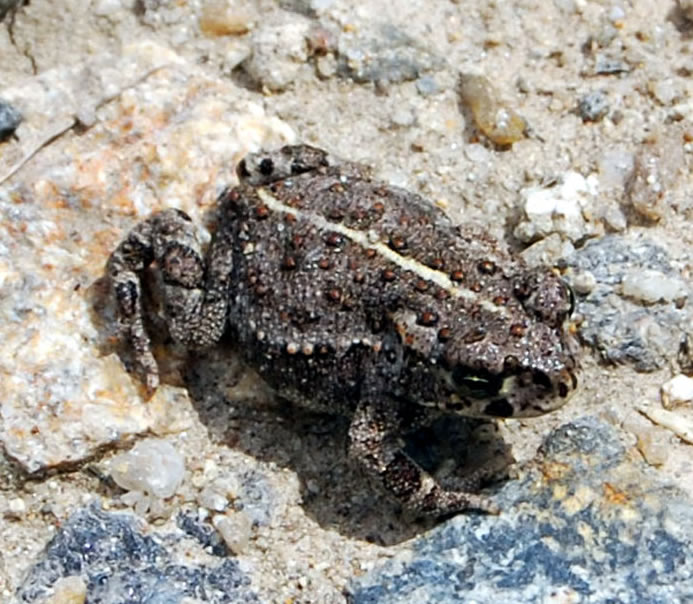
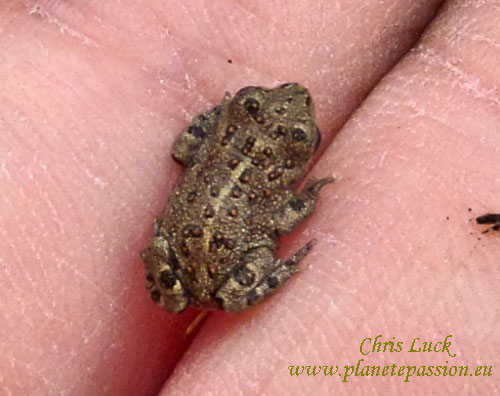
Reproduction starts in April and can extend throughout the summer, females produce up to 7500 eggs but normally 3000 to 4000 laid in single strands, these hatch after 4 to 6 days possibly longer depending on the temperature of the water, metamorphosis is around 7 weeks later.
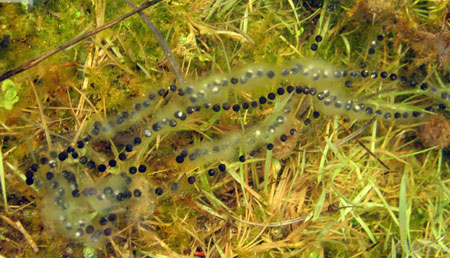
Photo. Natterjack toad spawn.
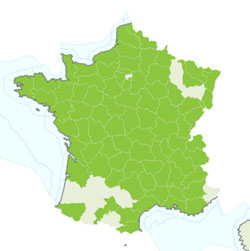
Populations have fallen quite dramatically probably due to habit loss and human disturbance; there is now severe fragmentation and isolation of populations. Berne Convention, Annexe 2. Habitats Directive, Annexe 4. National protection, Art.1.

